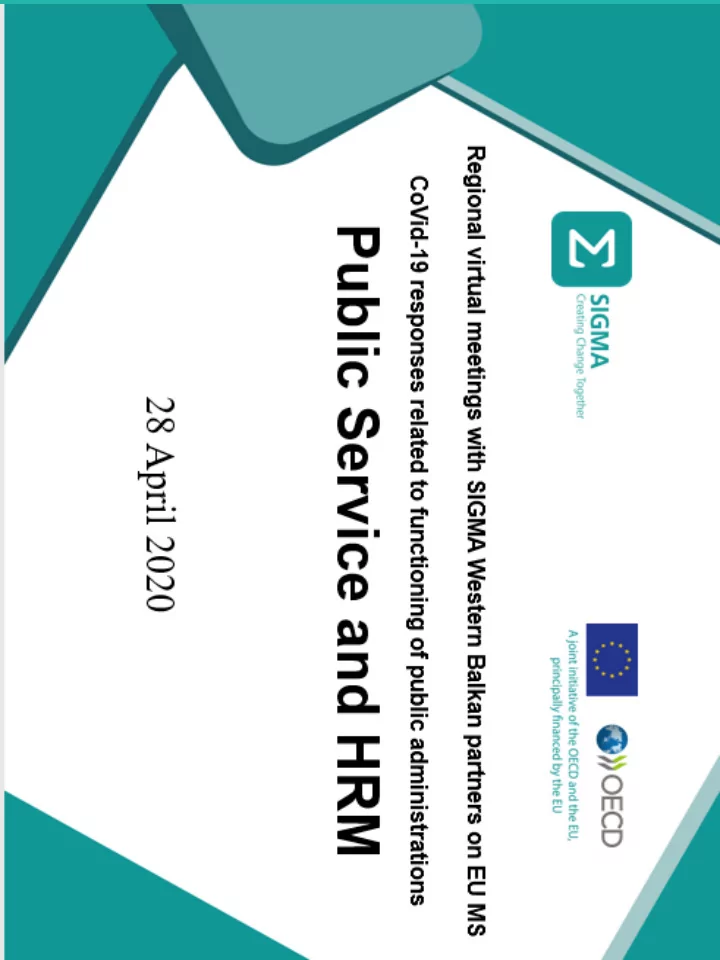

A joint initiative of the OECD and the European Union, principally financed by the EU 1
Directions of HR transformation • Teleworking A joint initiative of the OECD and the European Union, • Flexibility principally financed by the EU • Financial arrangements • Questions 2
Teleworking • Actions A joint initiative of the OECD and the European Union, Teleworking as a default way of work principally financed by the EU • Challenges Access to internet Availability of IT tools for communication, shared documents, access to databases, e-signatures, etc. How to supervise employees? How to motivate employees? Teleworking and overtime? How to telework and take care of kids? Psychological support 3
Flexible working mode • Actions: Overtime A joint initiative of the OECD and the European Union, Mandatory leave principally financed by the EU Flexible working hours Part time work Rotation – teleworking and working in the office • Challenges: Uneven workload Limits of overtime (length of calculation periods) Encouraged or mandatory leave? Flexible working hours – how to organise to effectively work in teams? 4
Flexible HR solutions • Actions: Scaling down or delaying some regular HR A joint initiative of the OECD and the European Union, processes (appraisals, trainings) principally financed by the EU Simplified and fast recruitments Enhanced short term mobility • Challenges: Incentives for mobility How to ensure merit and fairness in simplified recruitment procedures? How to introduce to work new employees when everybody teleworks? 5
Financial arrangements • Actions: A joint initiative of the OECD and the European Union, Increased payments for overtime Pay rises and bonuses for selected, crucial staff principally financed by the EU Salary arrangements for those who work less • Challenges: Prolonged period of shutdown requires thinking about more sustainable solutions Equal pay for equal work principle in the situation of uneven workload Pressure to reduce the salary budget to increase fiscal space for re-prioritisation of public expenditure 6
Questions for discussion • How are you coping with the teleworking? – . A joint initiative of the OECD and the European Union, • How has the crisis affected the working time principally financed by the EU arrangements ? • What are the most burning issues in the HRM area where you need external support? • Have you started to prepare yourself for the post-confinement period to gradually open up your offices? 7
Recommend
More recommend